Blue stars are extreme in every way. They're the hottest, most massive and shortest-lived stars in the universe.
Space News & Blog Articles
Plan to research solar power from space
The Sun never stops shining in space, and it is much more intense there than on the surface of the Earth. So what if we could gather that energy up in space then beam it down to Earth?
Recent studies funded by the Preparation element of ESA’s Basic Activities programme, show the concept, called Space-Based Solar Power, is theoretically workable and could support the path to decarbonising the energy sector. However, significant uncertainties and technical challenges remain. In response ESA is proposing a R&D programme to mature the concept and its critical technologies – SOLARIS.
New Observations Add Fuel to Fast Radio Burst Origin Debate
A peculiar repeating fast radio burst seems to be coming from a dynamic environment in an otherwise uninteresting region, leaving researchers scratching their heads as to the burst’s origin.
The post New Observations Add Fuel to Fast Radio Burst Origin Debate appeared first on Sky & Telescope.
NASA's DART spacecraft will crash into an asteroid tonight: Watch live
On Monday (Sept. 26) at 7:14 p.m. EDT (2314 GMT), if all goes well, DART will crash into Dimorphos in an attempt to alter the moonlet's trajectory.
Do black holes explode?
Black holes go boom in several ways.
See Jupiter shine during its closest approach to Earth since 1963 on Monday (Sept. 26)
Skywatchers will get a rare opportunity to see Jupiter in its full glory when its opposition happens at the same time as its closest approach to Earth.
Space junk worries prompt new action by NASA, Congress
Recent work by NASA and Congress seeks new solutions for space debris, which has been a U.S. government priority amid anti-satellite testing and the rise of satellite megaconstellations.
NASA spacecraft on track for asteroid deflection experiment
Artist’s concept of the DART spacecraft, with its LICIACube ride along spacecraft, approaching asteroids Didymos and Dimorphos. Credit: NASA
A NASA spacecraft is aiming to slam into a stadium-size asteroid at more than 14,000 mph Monday in a planetary defense experiment to test a technique that could be used in the future to divert threatening asteroids off a collision course with Earth.
The Double Asteroid Redirection Test, or DART, mission will try to change the orbit of the asteroid Dimorphos, the smaller object in a binary pair of asteroids circling the sun close to Earth’s orbit. Dimorphos and its larger companion, named Didymos, pose no near-term threat to Earth, according to NASA.
Scientists will measure how the DART spacecraft’s collision changes the course of Dimorphos around Didymos, validating models of how a kinetic impactor in the future could knock an asteroid off a path that would strike Earth.
“This inaugural planetary defense test mission marks a major moment in human history,” said Bobby Braun, head of space exploration at the Johns Hopkins University Applied Physics Laboratory in Maryland, which built, manages, and controls the DART spacecraft for NASA. “For the first time ever, we will measurably change the orbit of a celestial body in the universe. Doing so has clear benefits in ensuring humanity’s ability to deflect a potential threatening asteroid in the future.”
The DART spacecraft launched last November on a SpaceX Falcon 9 rocket from Vandenberg Space Force Base in California. The spacecraft is about the size of a vending machine with a mass of less than 1,300 pounds, or 600 kilograms. It has two roll-out solar array wings spread out to a span of more than 60 feet (19 meters), which have generated electrical power through the spacecraft’s 10-month cruise to set up for Monday’s impact.
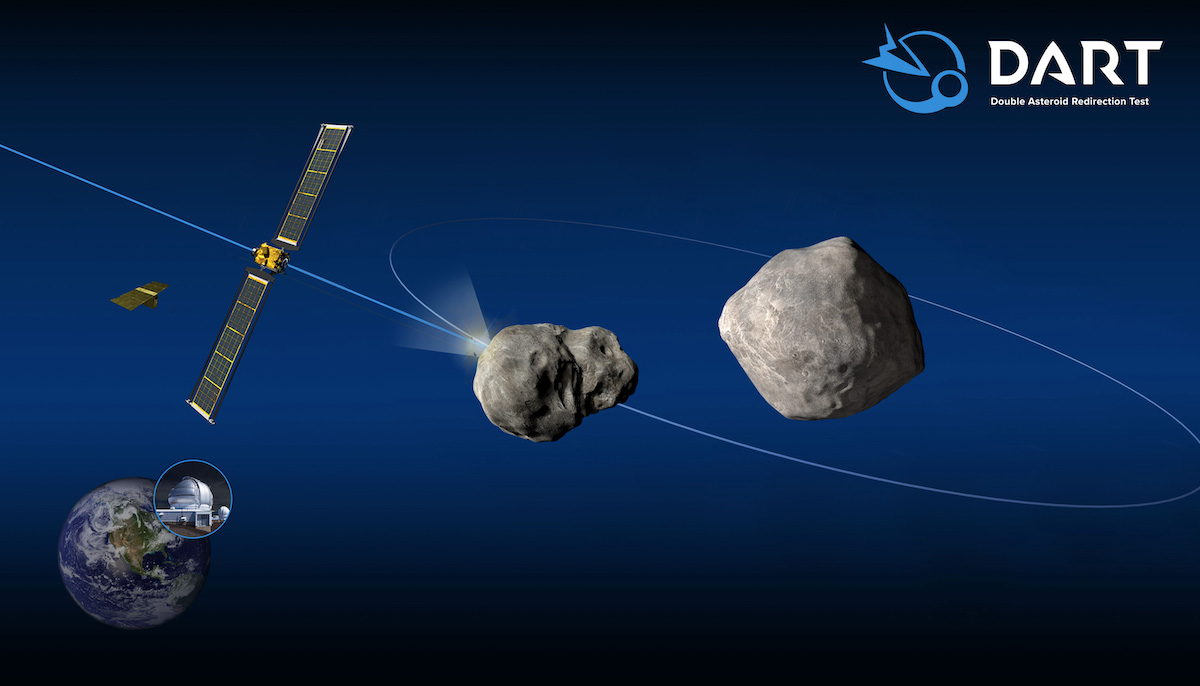

Chinese Companies are Planning to Offer Space Tourism Flights by 2025
One of the more famous features of Space Age 2.0 is the rise of the commercial space industry, also known as “NewSpace.” While the space agencies of the world plan to send astronauts back to the Moon (this time, to stay), crewed missions to Mars, and robotic missions to every corner of the Solar System, NewSpace companies are offering cost-effective launch services, sending commercial astronauts to space, and commercializing Low Earth Orbit (LEO). There’s also the prospect of space tourism, with companies like Virgin Galactic, Blue Origin, and SpaceX offering suborbital flights, trips to LEO, and beyond!
China, one of the fastest-growing nations in space, is looking to offer commercial flights to suborbital space. According to senior rocket scientists Yang Yiqiang, who spoke to the state-run China Global Television Network (CGTN), China will send its first group of commercial passengers on a spaceflight, with ticket prices ranging between $287,200 to $430,800 (2 to 3 million yuan). While China is a relative newcomer to the commercial space scene, this announcement signals its intent to catch up to companies based in the U.S. and other space competitors.
Illustration of the first two types of commercial space travel: flights to the ISS (right) and twin-fuselage configuration designs (left). Credit: CFP
Yang Yiqiang was the general director of the Long March 11 rocket project and the founder of Beijing-based rocket company CAS Space (founded in 2018). As Yang explained, there are currently three modes of spacelight:
The International Space Station (ISS): This consists of launch vehicles sending spacecraft to rendezvous with the ISS. This sets strict requirements on the physical and psychological conditions of the tourists.Lift and Release: This consists of a cargo aircraft lifting another spacecraft to release altitude and the spacecraft flying to suborbital altitude. Virgin Galactic offers this mode with its White Knight Two aircraft (and other “motherships”) and VSS Unity and Imagine spacecraft.Rocket Flights: This consists of launch vehicles sending capsules to suborbital altitudes. This is the mode Blue Origin is dedicated to using its New Shephard reusable launch vehicle.According to Yang, this third mode will be most suitable for commercial passengers and the one that China will focus on. Based on the illustrations featured by CGTN, this will probably involve using the Long March 3C (CZ-3C) to launch a Shenzou spacecraft (and/or a converted Tianzhou automated cargo spacecraft) with a crew of three. China’s next-generation crewed spacecraft (a reusable vehicle intended to replace the Shenzou) can accommodate up to seven passengers and is likely to be used for tourism ventures.

Gravity Really Tangled up the Light From a Distant Quasar
Way back in 1979, astronomers spotted two nearly identical quasars that seemed close to each other in the sky. These so-called “Twin Quasars” are actually separate images of the same object. Even more intriguing: the light paths that created each image traveled through different parts of the cluster. One path took a little longer than the other. That meant a flicker in one image of the quasar occurred 14 months later in the other. The reason? The cluster’s mass distribution formed a lens that distorted the light and drastically affected the two paths.
Fast-forward to 2022. A team of astronomers from the University of Valencia reported on their study of a similar effect with another distant quasar. They spent fourteen years measuring an even longer time delay between multiple images of their target quasar. The galaxy cluster SDSS J1004+4112 plays a role in the delay. The combo of galaxies and dark matter in the cluster is really entangling the quasar light as it passes through. That’s causing the light to travel different trajectories through the gravitational lens. The result is the same strange time-delayed effect.
Hubble’s image of SDSS J1004+4112 with annotations showing the lensed images of the distant quasar, plus other lensed objects.
“The four images of the quasar that we observe actually correspond to a single quasar whose light is curved on its path towards us by the gravitational field of the galaxy cluster”, said José Antonio Muñoz Lozano, professor of the Department of Astronomy and Astrophysics, and director of the Astronomical Observatory of the University of Valencia. “Since the trajectory followed by the light rays to form each image is different, we observe them at different instants of time; in this case, we have to wait 6.73 years for the signal we observed in the first image to be reproduced in the fourth one.”
The Sloan Digital Sky Survey first discovered cluster SDSS J1004+4112. Hubble Space Telescope imaged it in 2006. It was the first image of a single quasar with its light split into five images by lensing.
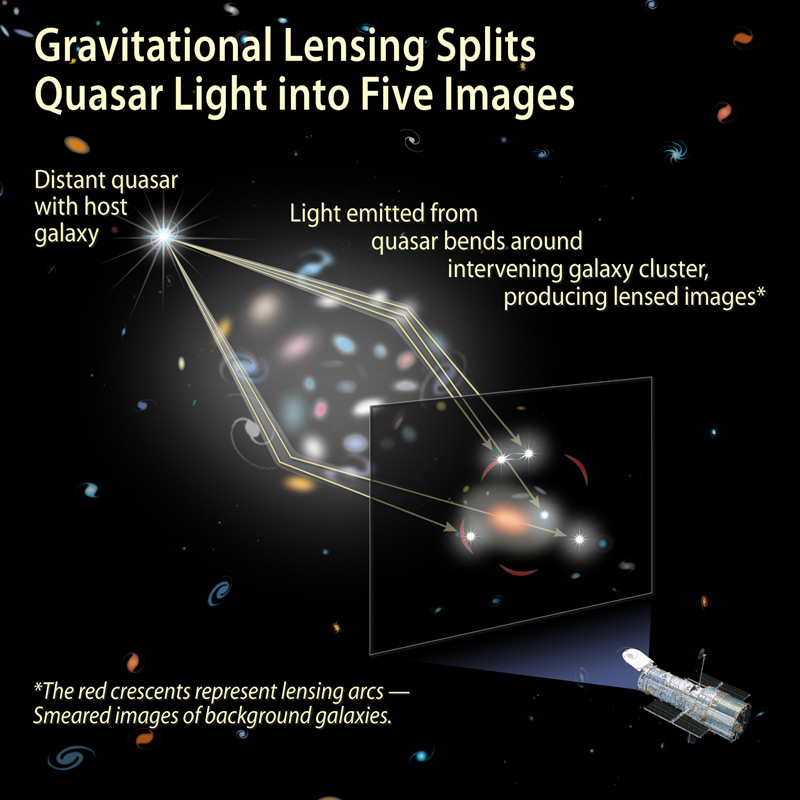
Life can Thrive Around Even the Smallest Stars
Photosynthesis is probably the most important chemical reaction for life on Earth. It is the process plants use to transform sunlight into energy it can use. Through it, plants can produce carbohydrates they can use (and we can eat when we harvest plants), generating oxygen as a by-product. Photosynthesis is why Earth’s atmosphere is about 20% oxygen. No photosynthesis, no life on Earth as we know it.
It’s also the reason so many plants are green. Most plants use chlorophyll as part of the photosynthesis process, which reflects green light while absorbing red and blue light through photosynthesis. If you think about it, that’s a bit odd, since the Sun gives off its most intense light in the green range of the spectrum. There is actually a photosynthesis chemical known as retinal which absorbs green and reflects red and blue. If plants used retinal instead of chlorophyll, then most plants would be purple. Some bacteria use retinal, but it turns out for sunlight that chlorophyll is more efficient, so overall it gives more bang for your buck. It’s possible that early life used retinal, which is a simpler molecule, before figuring out how to use chlorophyll.
Of course, photosynthesis evolved to take advantage of a bright yellow star that emits most of its light in the visible spectrum. But Sun-like stars make up less than 8% of main sequence stars in our galaxy. Red dwarfs, on the other hand, make up 75% of main sequence stars. Statistically, the vast majority of potentially habitable planets orbit a red dwarf. And red dwarfs are much smaller and cooler than our Sun. Most of the light they emit is in the infrared. Infrared light is nice and warm, but does it have the kick you need to power photosynthesis? In a recent study, a research team tried to find out.
The spectrum of the Sun compared to that of an M-class red dwarf. Credit: T Roger/Europlanet 2024 RITo do this they created a starlight simulator. It’s an array of LEDs set up to mimic the spectrum of a red dwarf. The device can mimic the spectra of various types of stars, but since red dwarfs are so common they studied that first. They then created an atmosphere that might be typical for an early habitable world, tossed in some bacteria, and illuminated it with simulated starlight.
They started with cyanobacteria, which were among the first type of organisms on Earth to use photosynthesis to produce oxygen. They are particularly good at surviving in harsh environments. The cyanobacteria thrived and grew under the infrared glow of a red dwarf, so the team repeated the experiment with red and green algae. Both of them thrived as well. So even though red dwarfs don’t emit the type of light which drove the evolution of photosynthesis, terrestrial organisms could live under a red dwarf sun. This is great news for everyone wanting to find extraterrestrial life.
This jaw-dropping Jupiter photo is a photographer's sharpest ever and made of 600,000 images
Veteran astrophotographer Andrew McCarthy of Arizona unveiled this spectacular photo of Jupiter this month on Sept. 17 after capturing his best view yet of the giant planet.
Upcoming Star Wars TV shows
With a number of upcoming Star Wars TV shows heading your way soon, the Force will be with you. Always.
'Blade Runner 2099' live action TV show coming to Amazon Prime Video
A new life awaits you in the off-world colonies, a chance to begin again in a golden land of opportunity and adventure.
Protecting Earth from asteroids is complicated and requires global cooperation
NASA's DART spacecraft is closing in on its appointment with Dimorphos, but the energetic encounter is just the very speartip of global efforts to keep life on Earth safe from asteroid impacts.
NASA's DART asteroid mission is a rare opportunity for space-rock scientists
NASA's DART mission, which will slam into an asteroid on Sept. 26, is not just a planetary defense exercise; it's also an opportunity to learn how binary asteroids form.
High roller: Dungeons & Dragons launches a die, space 'pilot' into stratosphere
The iconic 20-sided Dungeons and Dragons die soared close to the 'Astral Plane' to advertise a new space campaign for the role-playing game.
Delta 4-Heavy rocket deploys spysat on final planned mission from ‘Slick Six’
EDITOR’S NOTE: Updated Sept. 25 with satellite sightings and radio signal detections.
ULA’s Delta 4-Heavy rocket climbs away from Space Launch Complex 6 at Vandenberg Space Force Base to begin the NROL-91 mission Saturday. Credit: Brian Sandoval / Spaceflight NowUnited Launch Alliance sent a triple-core Delta 4-Heavy with a top secret U.S. government spy satellite into orbit Saturday from California’s Central Coast, closing out a chapter in the tangled history of a launch pad originally built to support military astronaut missions on Titan rockets and space shuttles.
The spy satellite on-board the Delta 4-Heavy is owned by the National Reconnaissance Office, which discloses few details about its spacecraft. The circumstances of the launch Saturday — its launch site, rocket configuration, and flight track after liftoff — led independent analysts to conclude the Delta 4 likely carried a high-resolution electro-optical surveillance satellite into orbit.
Two more Delta 4-Heavy rockets are left in ULA’s inventory for launches in 2023 and 2024 from Cape Canaveral as the company transitions to the next-generation Vulcan Centaur rocket, the replacement for the Atlas and Delta launcher families that date back to the dawn of the Space Age.
The Atlas 5 and Delta 4 rockets currently flown by ULA show little resemblance to their forebears, but the names are steeped in history. Saturday’s launch from Vandenberg Space Force Base was the 95th and final flight of a Delta rocket from the military spaceport about 140 miles (225 kilometers) northwest of Los Angeles, and the 387th launch overall of a rocket bearing the Delta name.
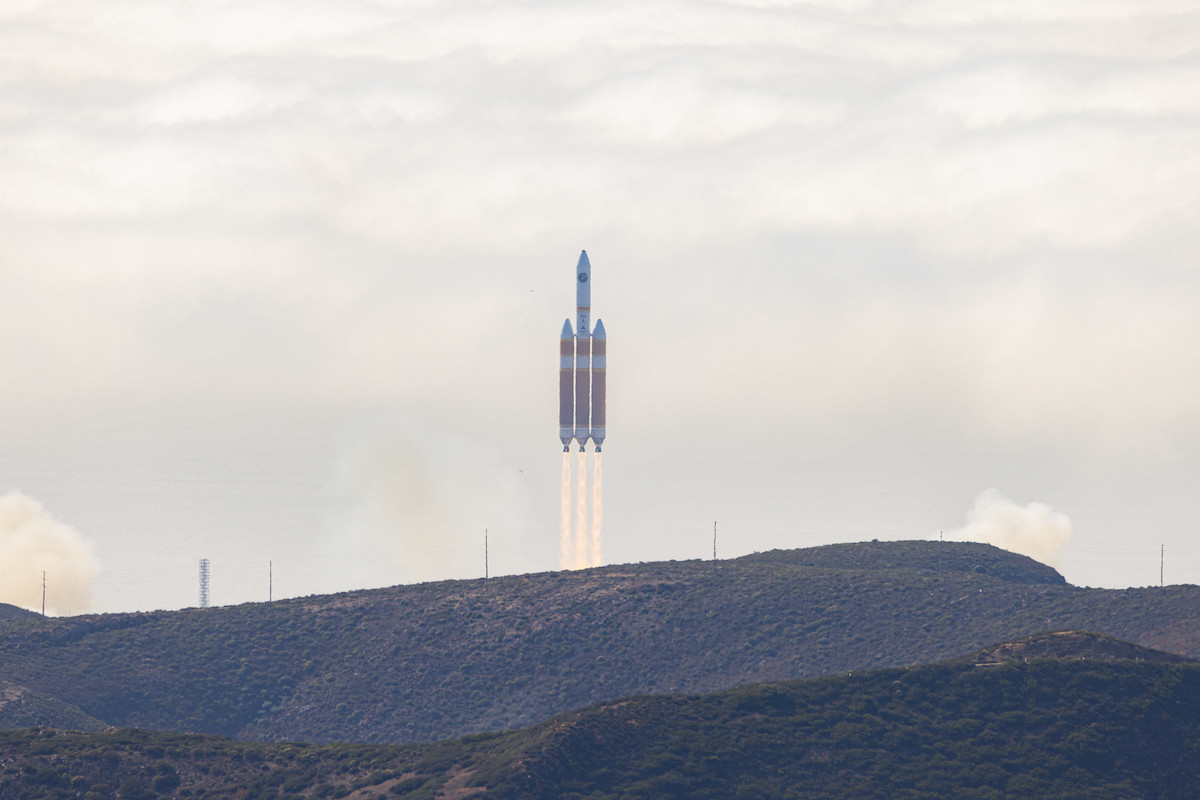

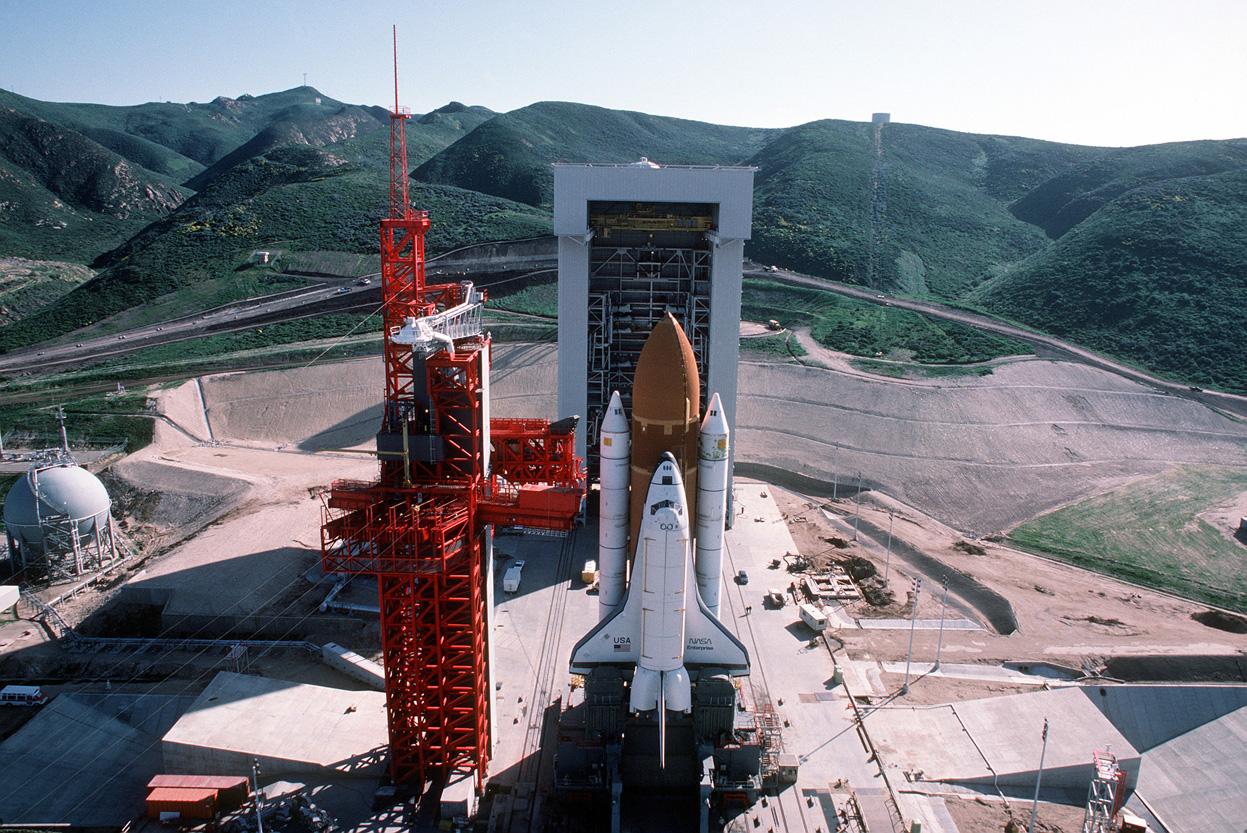
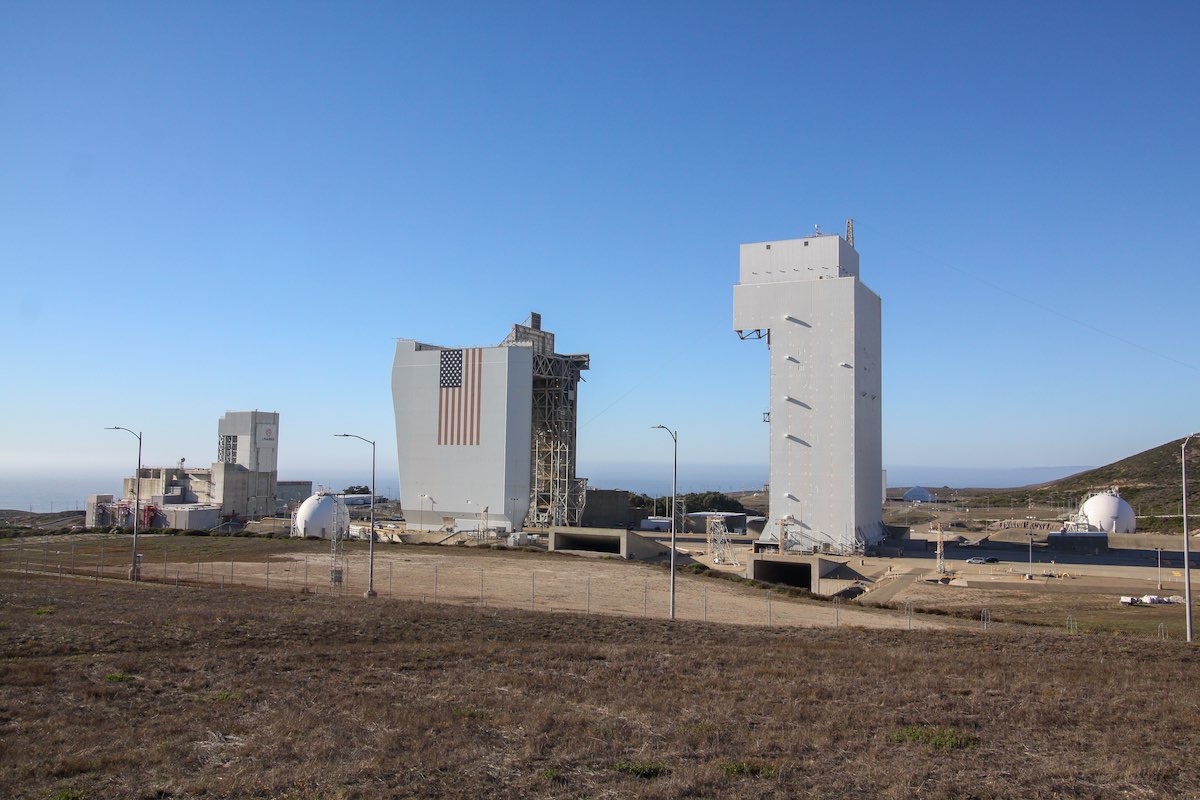
Powerful Delta IV Heavy rocket launches US spy satellite on final flight from California
The Delta IV Heavy lofted a satellite for the U.S. National Reconnaissance Office from Vandenberg Space Force Base today (Sept. 24), the vehicle's last-ever liftoff from California.

